How To Eat Healthy On A Budget To Lose Weight
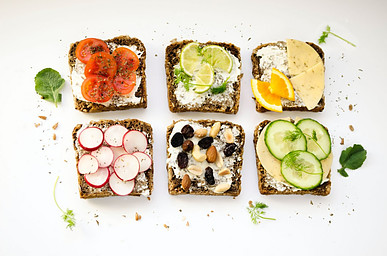
The beginning of a new year is the perfect time to start thinking about improving your relationship with food. A healthy relationship with food is beneficial for a healthy lifestyle and wellness. A common misconception many people have is that eating healthy to lose weight is too expensive to maintain. In fact that’s not true, there are a wide variety of ways to eat healthy on a budget to lose weight. Stick to your New Year’s resolutions and join me here to find out how.
Although regular exercise is a very important step in the weight loss journey, the ability to lose weight also comes down to what we eat. With this being said, I want to share the 6 tips to keep in mind when trying to eat healthy on a budget!
How To Eat Healthy On A Budget To Lose Weight
Eating healthy on a budget to lose weight is absolutely achievable with some smart planning and choices. Here are some tips to help you do just that:
- Plan Your Meals: Before you go shopping, plan out your meals for the week. Look for recipes that use affordable, nutrient-rich ingredients like beans, lentils, whole grains, and seasonal fruits and vegetables.
- Buy in Bulk: Purchase staple items like rice, beans, oats, and frozen vegetables in bulk, as they often come at a lower price per serving. This can save you money in the long run and provide you with healthy options for multiple meals.
- Choose Affordable Proteins: Opt for budget-friendly protein sources such as eggs, canned tuna or salmon, chicken thighs, tofu, and legumes like lentils and beans. These options provide essential nutrients without breaking the bank.
- Shop Seasonally and Locally: Seasonal produce is often more affordable and fresher than out-of-season options. Visit local farmers’ markets or look for sales at your grocery store to find the best deals on fresh fruits and vegetables.
- Minimize Processed Foods: Processed and convenience foods tend to be more expensive and less nutritious than whole foods. Try to limit your consumption of pre-packaged snacks, sugary beverages, and ready-to-eat meals, as they can quickly inflate your grocery bill.
- Cook at Home: Eating out or ordering takeout can be costly and often less healthy than preparing meals at home. By cooking your own meals, you have full control over the ingredients and portion sizes, which can help you manage your weight more effectively.
- Emphasize Plant-Based Meals: Plant-based meals are not only budget-friendly but also tend to be lower in calories and saturated fats. Incorporate more vegetarian or vegan dishes into your diet, using ingredients like beans, lentils, tofu, and plenty of vegetables.
- Use Coupons and Discounts: Take advantage of coupons, sales, and discounts to save money on groceries. Many grocery stores offer loyalty programs or digital coupons that can help lower your food costs.
- Limit Wastage: Try to minimize food wastage by properly storing leftovers, using up perishable items before they spoil, and repurposing ingredients in multiple meals. This not only saves money but also helps reduce your environmental footprint.
- Stay Hydrated with Water: Water is not only essential for good health but also a budget-friendly beverage option. Avoid sugary drinks and excessive alcohol, as they can add unnecessary calories and expenses to your diet.
By following these tips and making mindful choices, you can eat healthily on a budget while working towards your weight loss goals. Remember to focus on nutrient-dense foods, portion control, and consistency in your eating habits.
Healthy Grocery Shopping Tips on a Budget
1. Plan Ahead for the Grocery Store
Putting in a bit more effort before you get to the grocery store can make your trip much more organized and productive! It’s far too easy to get lost in every aisle trying to figure out what groceries to get. It will also prevent you from getting too many junk foods or buying duplicate items. To avoid such a hassle plan ahead before even going to the grocery store. Do some inventory and consider what you already have at home. This practice prevents you from buying more of the same or similar items unless it is necessary. Be sure to take note of what is already in your pantry in order to lighten your load at the store.
Check out this weekly meal planner and grocery list
2. Keep Recipes Handy
As I mentioned in my previous article How to Have a Healthy Relationship With Food, a great way to eat healthier and lose weight is by cooking for yourself. Keeping a book or list of nutritious recipes is instrumental in doing so and will help you to create an organized grocery list. You will find that making a menu at the beginning of the week for the days to come will save you a great deal of time, effort, and especially money. I have found that the temptation to eat out is much less when I have a perfectly good meal planned at home. Leftovers are also a great way to ignore the call of fast food! For many people, the days are just too short to put together a full home-cooked meal. Therefore, cooking larger portions and setting some aside for the next day or two definitely comes in handy. Just make sure not to overeat simply because the food is available to you.
3. Hit All Your Food Groups
According to moneycrashers.com , the USDA recommends that we consume 3 to 8 ounces of grain every day, with about half of that being whole grains. Luckily, certain whole grains, like brown rice and oats, tend to be less expensive than most processed cereals. This is a prime example of how you can begin to substitute healthier food choices for their processed counterparts. Another budget and diet-friendly tip is to buy slightly less meat and swap it out for other sources of protein like lentils. The USDA notes that the average adult needs just 2 to 6.5 ounces of protein each day. However, this varies per person, so a good way to calculate the amount of protein that your body needs is to eat 0.8 grams of protein per kilogram of body weight. With this in mind, you can limit your spending on expensive cuts of meat by finding protein in other less expensive foods choices.
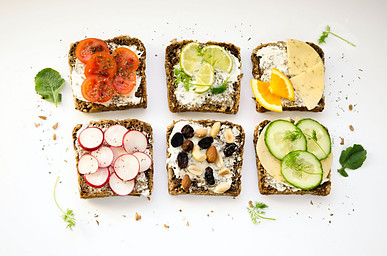
Remember: the goal here is to save money AND eat healthy. Try not to lose sight of one in pursuit of the other. Making sure your body gets all the key nutrients that it needs will greatly improve your quality of life, but it doesn’t take breaking the bank to get there!
4. Know Your Produce
Having a wide variety of fruits and vegetables in your home is a great way to promote healthy eating and weight loss. Knowing how to shop for produce is key to staying within your set budget. It is helpful to do a bit of research on what fruits or vegetables are in season before you go shopping! Buying fresh produce that is in season will guarantee you better value and lower prices. For those items that are not in season, buying them frozen or canned is better because it saves money.
5. Look for Sales and Coupons
With everything quickly becoming digital, grocery apps are becoming increasingly common. Instead of searching for sales and coupon books in the mail, you can simply scroll through your phone to find deals on the things you need. Use your resources! Compare costs and deals from store to store to find your grocery essentials at the best price. Don’t be afraid to stray away from big brand names as well. Often times, generic brands produce great quality foods for a considerably lower price. Just be sure to double-check the ingredients to make sure that you are still receiving similar quality items. This is also helpful when knowing the price tag could come in handy. According to businessinsider.com, it is helpful to make note of the unit price on an item. The unit price informs you of how much a food item costs per ounce and can be used to compare brands to find which one has better value for your money.
6. Stick to Your List
It’s easy to get distracted by your favorite unhealthy snacks when you shop but sticking to your list is very important. This is important specifically when trying to eat healthy and lose weight on a budget. All of your planning and preparation will be rendered useless if you aren’t able to stick to your list. Be sure when you go to the store to:
Eat before you shop – an empty stomach can trick you into buying more groceries than you really need
Stick to the perimeter of the store – more often than not, the processed foods are in the middle aisles while the produce and fresh foods are along the outside
Limit Unhealthy Snack Foods – there is nothing wrong with one or two treats, but loading up on sugary or processed foods adds extra calories to you and your bank account
Avoid Trendy Foods – if your goal is to save money then surely avoid trendy expensive foods such as goji berries, acai berries, chia seeds, cheese or quinoa
What Are The Cheapest and Most Nutritious Foods?
It is much easier to plan healthy inexpensive meals when you truly know what foods to look for. There are a great deal of dietary substitutions that can be made for foods that have similar nutritional values. I always compare the organic selections and choose organic when possible. Some of the cheapest and most nutritious foods to help plan your meals are:
1. Proteins
- Eggs – can be used in a wide variety of ways, such as omelets or simply scrambled with whole grain toast or tossed with peppers or onions
- Chicken Breast – grilled chicken is perfect for salads and sandwiches; chicken breast is also great in soups, casseroles, or simply baked
- Beans, such as pinto, black, garbanzo beans or lentils bought dry and in bulk – functioning as a source of fiber as well, beans can serve as another great addition to soup and are often mixed into healthy tacos or salads
- Nuts or seeds such as almonds, peanuts, or pumpkin seeds – not always the best price point but bought in bulk are nutritious protein and great for snacking
- Oats – oatmeal mixed with apples, berries, and other fruits and nuts is a perfect substitution for sugary or processed breakfast cereal
- Canned salmon or tuna – an alternative to fresh fish and great on a sandwich with fresh tomatoes
2. Dairy or Plant Based
- Yogurt, especially Greek or Almond yogurt – sprinkled with granola and frozen berries or blended into a nutritional smoothie
- Milk and cottage cheese – milk of any type either Almond Milk or Cows milk is useful for recipes and having cereal. Cottage cheese is a great snack with fruit on top.
3. Whole Grains
- Pasta with whole wheat noodles – another alternative to regular pasta noodles are zucchini, butternut, or spaghetti squash noodles. This kitchen gadget is great for making veggie noodles.
- Brown rice – a great addition to pasta and can be prepared in a similar manner accompanied by chicken and vegetables
4. Fruits and Vegetables
- Apples and Bananas – cut up with peanut butter can make for a great snack in between meals; they also add a sweet and crunchy topping to oatmeal
- Oranges – great source of vitamin C and available year round
- Dried cranberries, raisins, and other dehydrated fruits – you can mix these with a variety of seeds and nuts to make homemade trail mix
- Greens such as broccoli or spinach – are great sautéed with olive oil and sprinkled with various seasonings
- Russet or sweet potatoes – great mashed served with veggies or in a soup and bought in bulk can save money. Try this recipe for Potato Leek Soup
- Onions – needed for many recipes it’s great that they are an inexpensive option and available in bulk
Drink water not high sugar drinks
There are several ways to eat healthy on a budget and lose weight. Once you set a definitive budget for yourself, you can narrow down your needs at the grocery store to ensure your own success and to meet those New Year’s resolutions and lifestyle goals! Best wishes for success and please comment below with your goals.
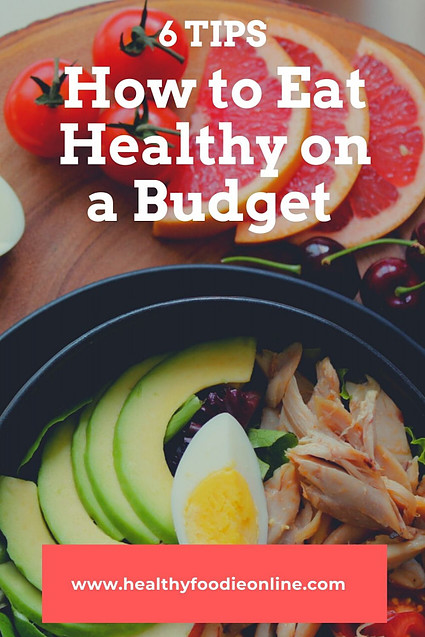

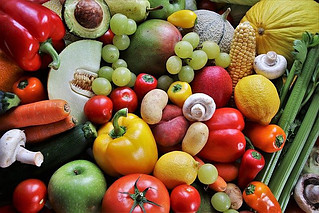
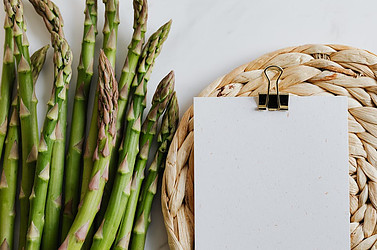

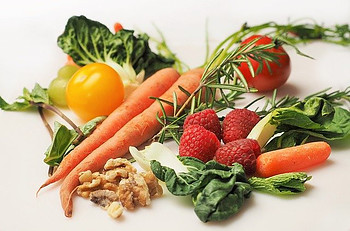



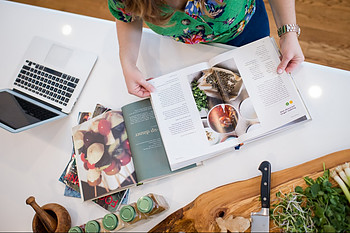
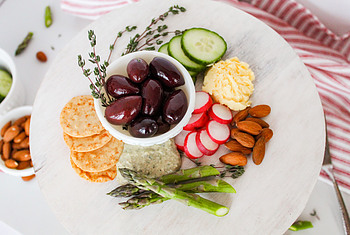
Wow! Thank you so much for putting this information together in such a clean & simple manner… This will truly be helpful!